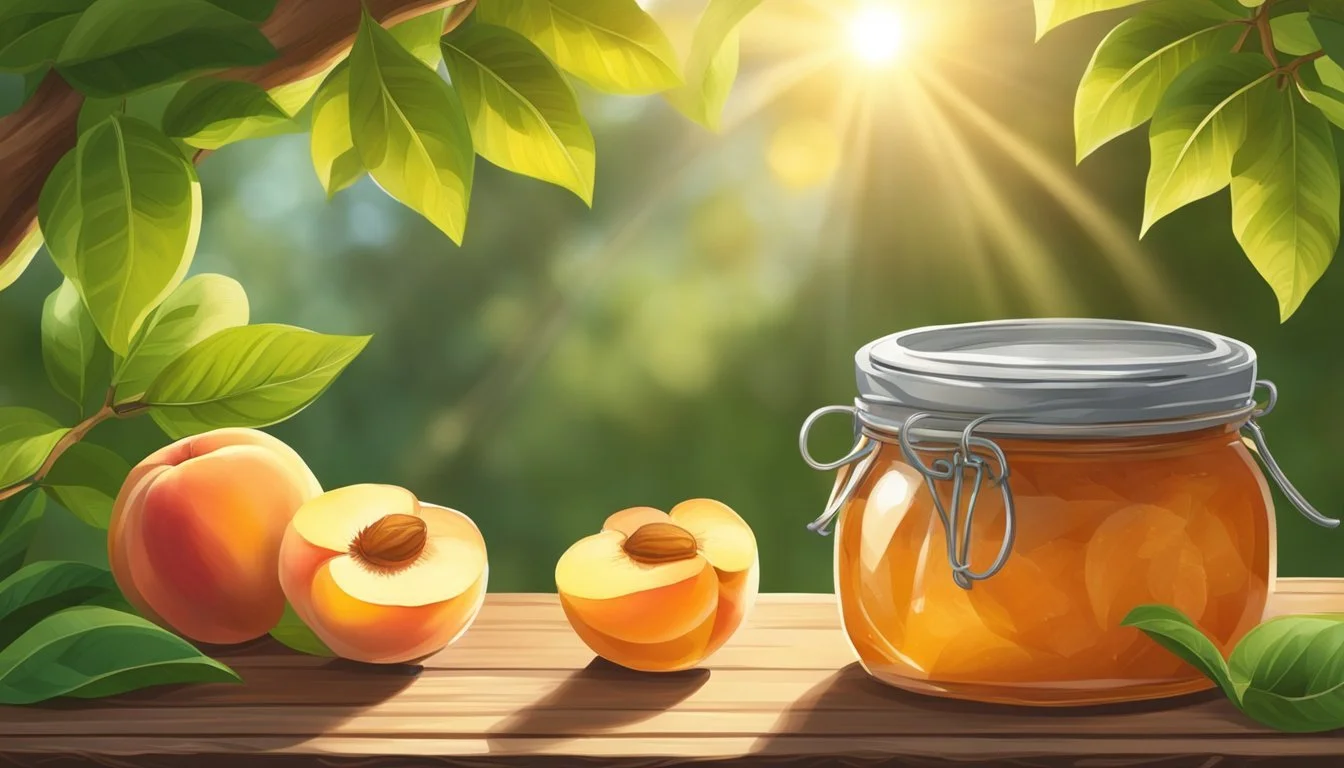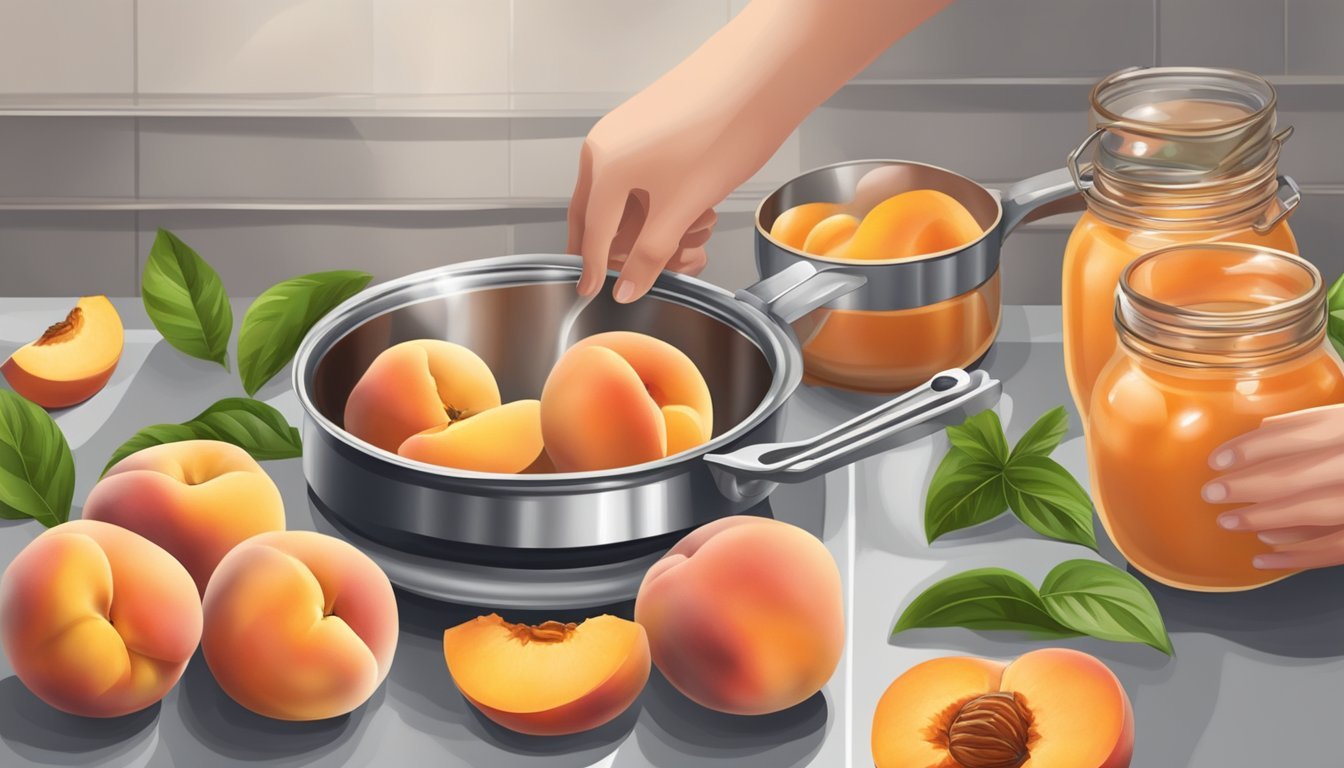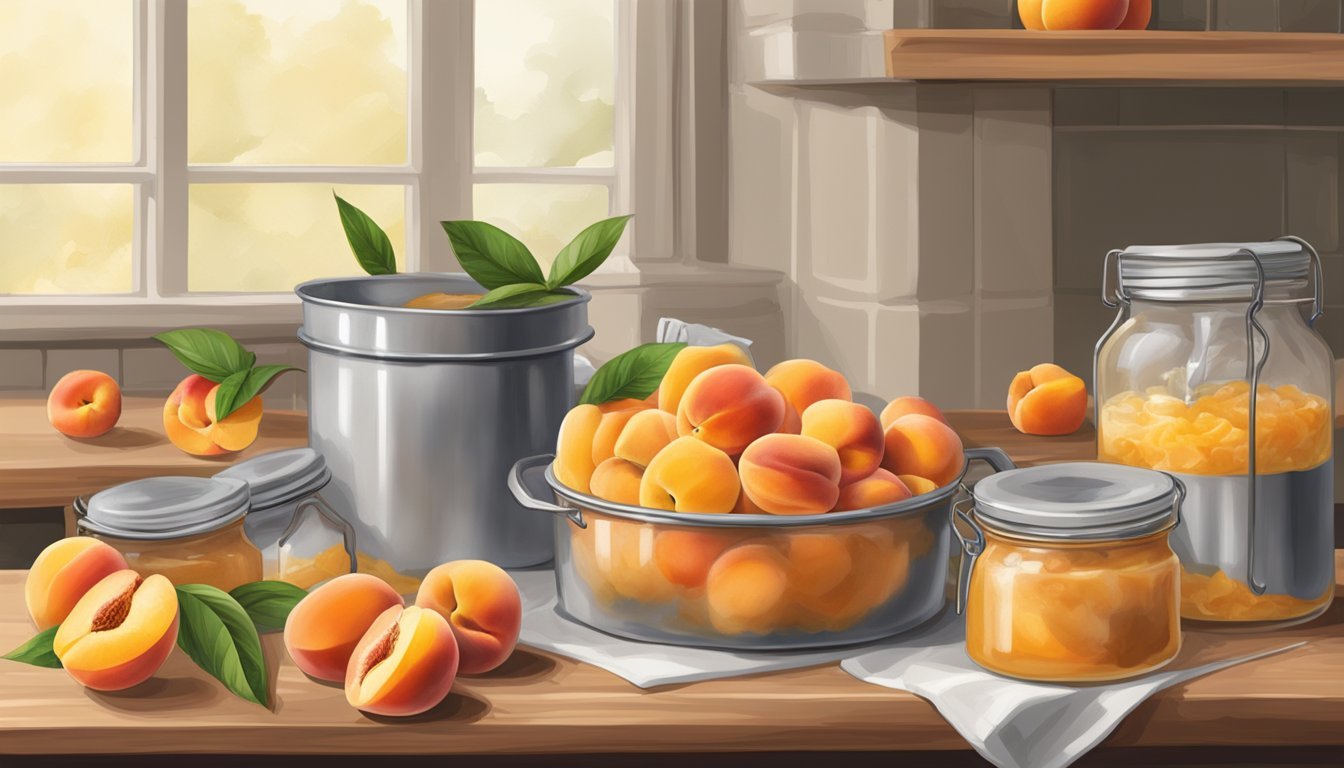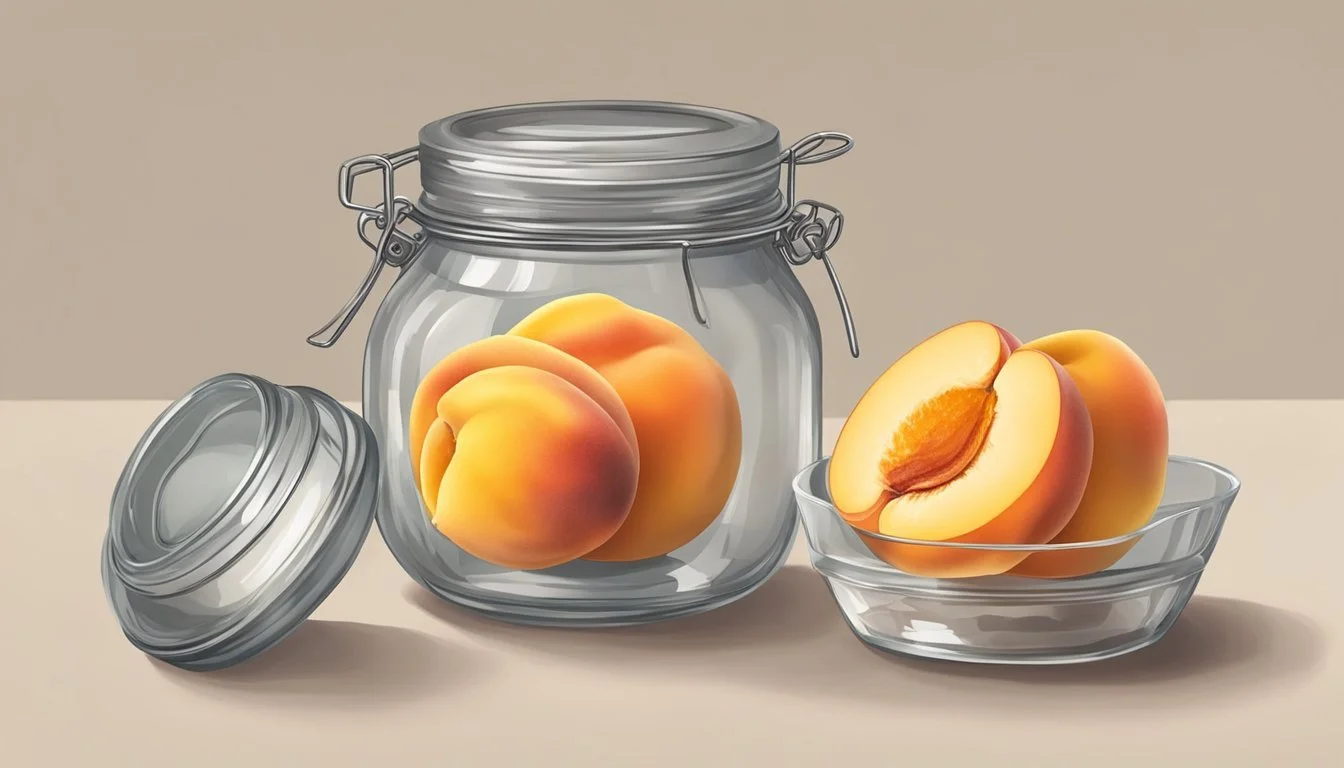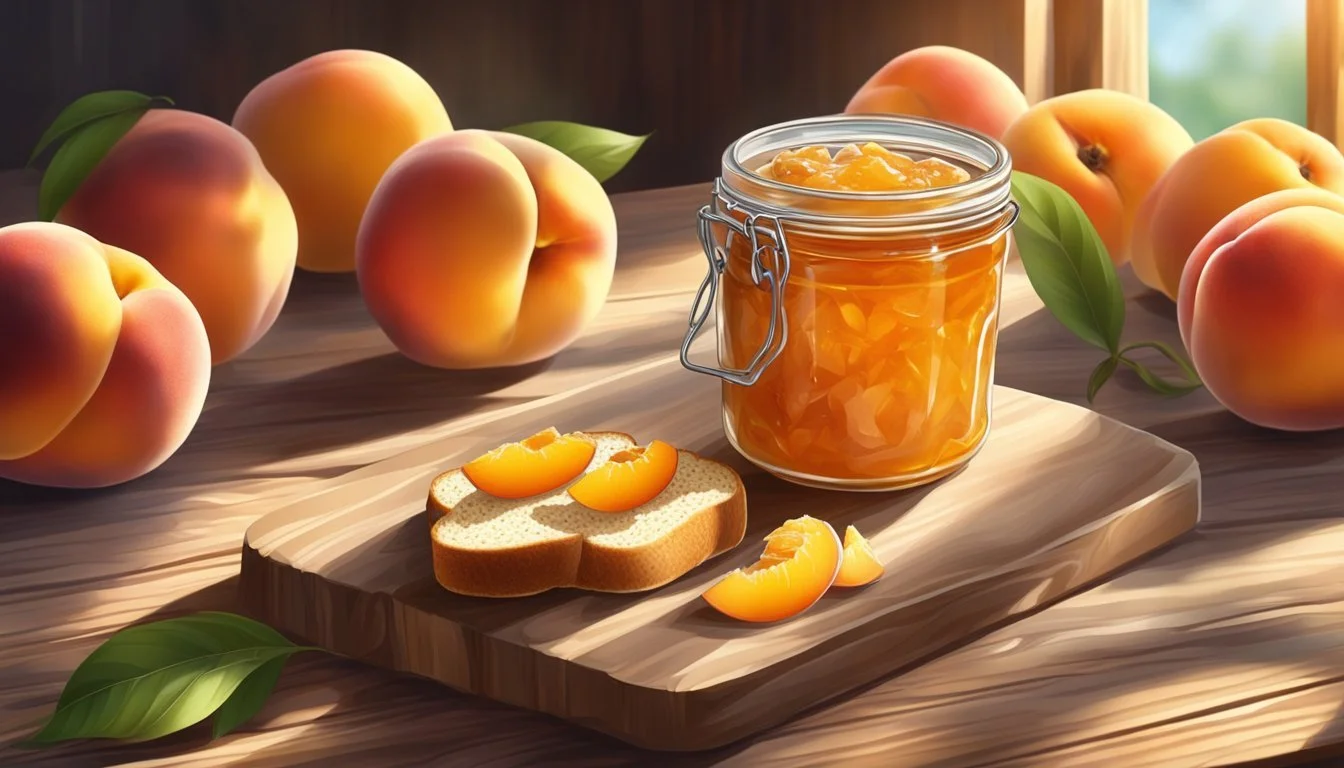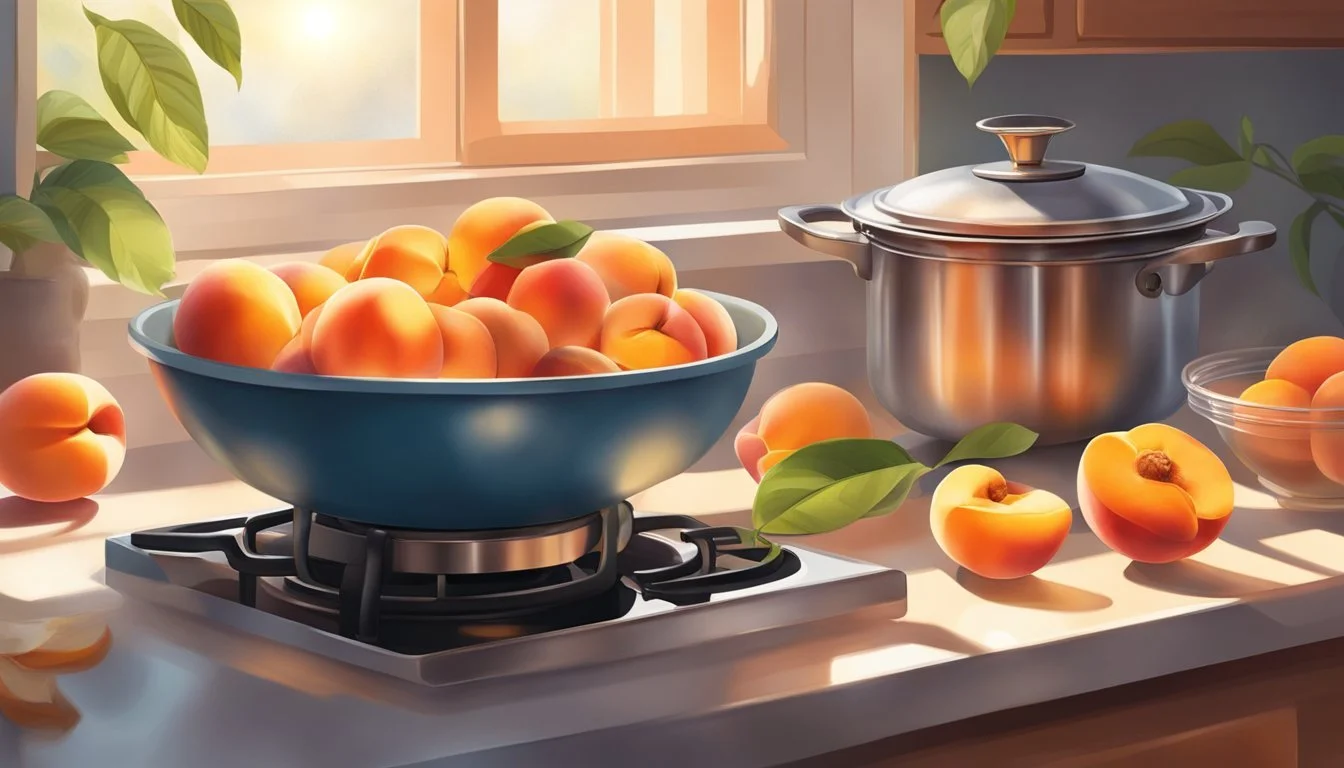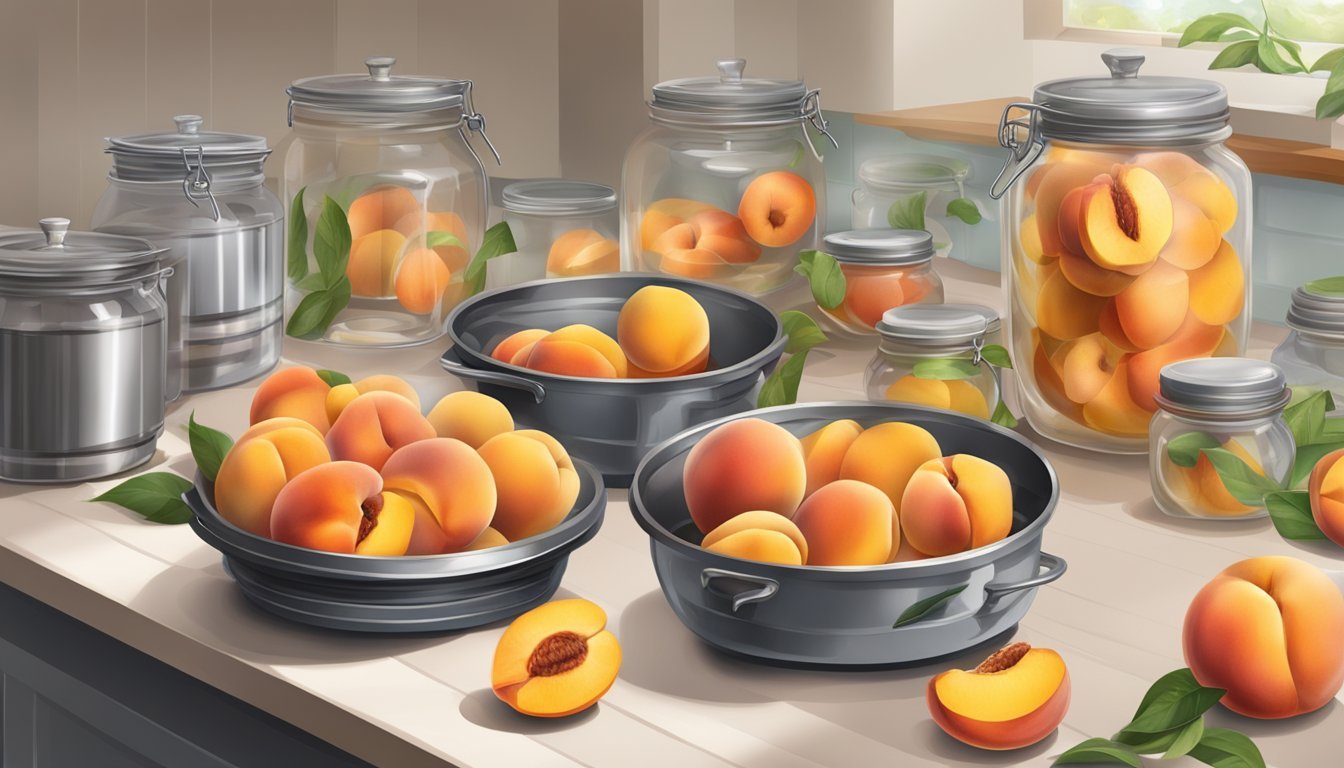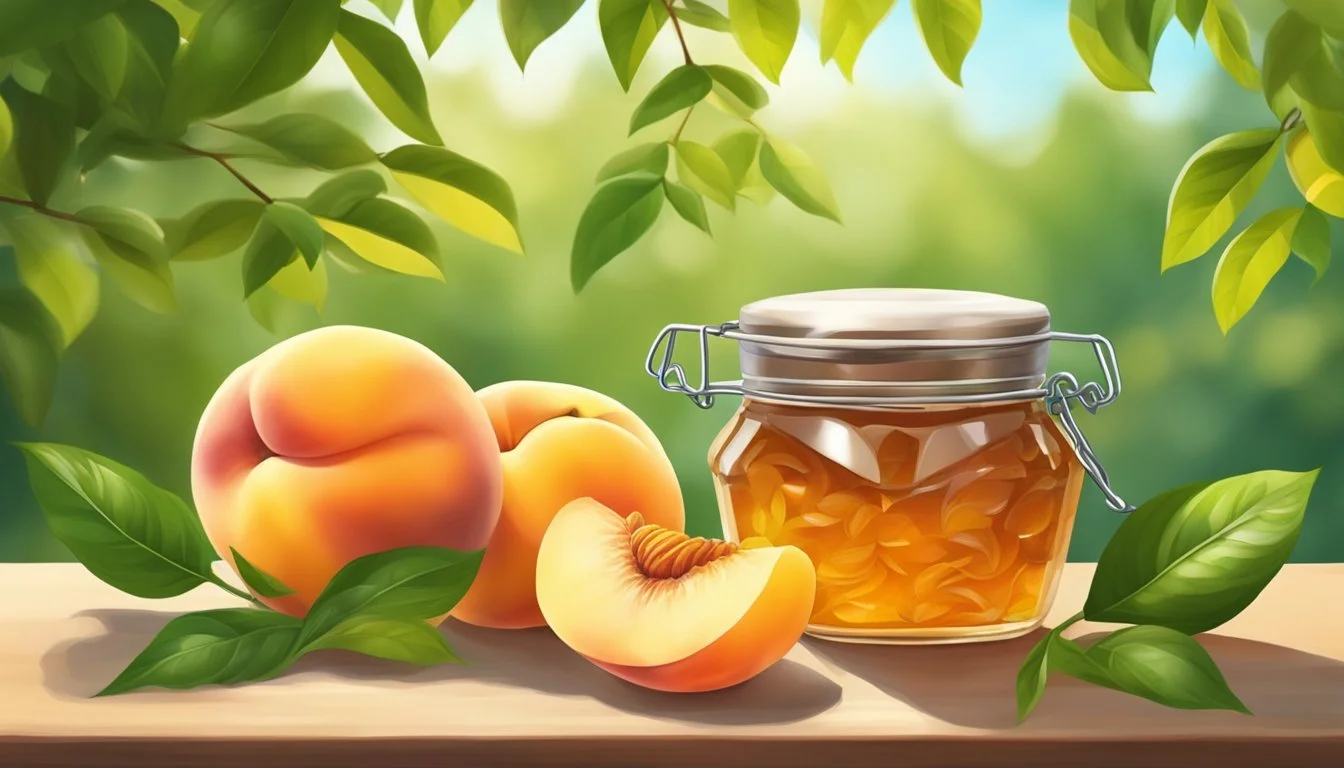Peach Peel Jam
A Sweet, Summery Preserve - How to Reduce Waste and Delight Your Palate
The allure of peach peel jam lies in its ability to capture the essence of summer's bounty in a jar, ensuring a year-round supply of sweet, sun-ripened flavors. This preserve is a clever nod to sustainability, utilizing the often discarded peels of peaches to create a delectable spread. With its rich, fruity taste and smooth texture, peach peel jam is an ideal accompaniment to a variety of dishes, from morning toast to gourmet cheese platters.
Peach peel jam is not only a tasty treat but also an economical way to enjoy the fruit's full potential. Typically, peaches are peeled for various culinary uses, and the peels are thrown away. However, making jam from these peels not only reduces food waste but also maximizes the usage of purchased produce. The process involves cooking down the peels with sugar and sometimes lemon juice, which helps in preserving the jam and adding a slight tartness to balance the sweetness.
Enthusiasts of homemade preserves appreciate peach peel jam for its simplicity and the nostalgic memories it evokes of traditional home canning techniques. The jam's texture and flavor can vary depending on the peach variety used and the proportion of ingredients. It's a versatile preserve that can be adjusted to personal taste, making it a staple in homemade pantry collections.
Selecting the Right Peaches
Selecting the perfect peaches is crucial for creating a delicious peach peel jam. The ideal peach should be ripe and of a variety suitable for jam-making to ensure the best flavor and texture.
Determining Ripeness
When selecting peaches for jam, one should look for fruits that are just at the peak of ripeness. Ripe peaches yield slightly to gentle pressure and emanate a sweet, fragrant aroma. They should be free from green tinges around the stem, indicating they are not under-ripe. Overripe peaches, while flavorful, may lead to a jam that is too soft or runny.
Here are signs of a ripe peach:
Firmness: Should give slightly under gentle pressure
Color: Rich, vibrant color without green areas
Aroma: Sweet and strong at the stem
Skin: Smooth, without bruises or blemishes
Types of Peaches for Jam
When it comes to making jam, the type of peach can affect the final product. There are two primary color categories that peaches fall into: yellow and white. Yellow peaches tend to have a traditional tangy peach flavor and are more acidic, which can be beneficial in jam-making for balancing sweetness. White peaches are sweeter and less acidic, providing a different flavor profile for jam.
Moreover, for peach peel jam, the peach variety's pit type is important. Freestone peaches are preferred because their pits are easily removed, which is essential for a smooth jam-making process. These peaches tend to be larger and have a more robust flavor, making them a common choice for preserves and jams.
Here is a brief overview of peach types suitable for jam:
Yellow Peaches: Traditional, tangy flavor; ideal for a balanced jam.
White Peaches: Sweeter, less acidic; provides a unique, delicate taste.
Freestone Peaches: Pits remove easily; preferred for a smoother jam-making experience.
Preparation of Ingredients
The initial steps in creating peach peel jam involve carefully preparing the peaches and accurately measuring the other components such as sugar and pectin. Proper preparation ensures the jam has the right consistency and flavor.
Peeling and Pitting Peaches
To begin, one needs to thoroughly wash the peaches. They should then blanch the peaches by boiling them for about 30 seconds, followed by plunging them into an ice water bath. This process makes peeling easier. After cooling, one gently removes the skin, ensuring the flavorful peel is kept intact for use in the jam. The pits are then removed, and the peach flesh is set aside for other recipes or further processing.
Measuring Sugar and Pectin
Measurement is critical for the jam's texture and preservation:
Sugar: It not only sweetens the jam but also acts as a preservative. One must measure the sugar precisely; too much can make the jam overly sweet and too little can affect preservation.
Pectin: This natural gelling agent dictates the jam's set. One should follow the specific recipe’s recommendation for the exact amount of pectin to use.
A balance of acidity is often achieved by adding lemon juice to the mix, which aids in the gelling process and enhances the jam's flavor. It's vital to use fresh lemon juice and measure it with care.
The Jam-Making Process
Preserving the essence of summer peaches in a jar requires precise cooking and texture testing. The process of making peach peel jam marries the sweet, aromatic flavors of peaches with the satisfaction of creating homemade preserves.
Cooking the Jam Mixture
To commence, one should gather the peach peels, which are often discarded, ensuring they are clean and free from blemishes. In a heavy-bottomed pot, the cook combines the peach peels with an amount of water and sugar proportional to the peels' weight, typically a 1:0.5 ratio for sugar to peach peels. The concoction is then brought to a vigorous boil, often adding pectin as a gelling agent to help with the consistency of the final product.
Ingredients Proportions:
Peach Peels: 100%
Sugar: 50% of the weight of the peach peels
Water: Sufficient to cover the peels
Pectin: According to the manufacturer's instructions
After reaching a rolling boil, stirring is essential to prevent scorching at the bottom. The jam mixture should maintain a boil for the duration specified in the peach jam recipe—usually around 20 to 30 minutes—allowing flavors to meld and the mixture to thicken.
Testing for Proper Texture
Ensuring the peach peel jam has reached the proper texture is crucial for a successful preserve. One common method is the plate test. Here is how it's performed:
Plate Test:
Place a small spoonful of the hot jam on a cold plate.
Refrigerate for two minutes.
Upon removal, draw a finger through the jam.
If the jam wrinkles and stays separated where the finger drew the line, it has set properly. If it remains runny, additional cooking time is required, and the test should be repeated until the desired texture is achieved. This critical step ensures the homemade peach jam retains its shape when served, providing a delightful spread for various treats.
Canning and Preservation
Canning peach peel jam ensures that the summery flavors are captured and preserved for year-round enjoyment. Proper techniques for filling and sealing jars, along with the water bath canning method, are pivotal for the safety and longevity of the preserves.
Filling and Sealing Jars
One begins by sterilizing the required jars and lids. Jars should be filled with the hot peach peel jam to within 1/4 inch of the top to allow for proper sealing. Air bubbles must be removed by gently tapping the jar or using a non-metallic instrument. Wiping the rim clean is crucial to ensure a good seal. Lids prepared according to the manufacturer's instructions are placed on the jars, and the rings are tightened to finger-tip tightness to allow for air to escape during the canning process.
Water Bath Canning Method
For water bath canning, the filled jars are placed in a water bath canner with enough water to cover the jars by at least 1 inch. The water is then brought to a rolling boil, and the jars are processed for the time specified in the canning recipe, which generally varies depending on the altitude. After processing, jars are removed from the canner using jar lifters and placed on a towel or rack without tilting them. Jars should cool for 12 to 24 hours; during this period, seals are checked. Canned peach jam should be stored in a cool, dark place to maximize shelf life.
Troubleshooting Common Jam Issues
When crafting peach peel jam, a cook may face several challenges including foam formation and acidity adjustment. The following subsections offer practical solutions for these common issues. By applying these tips, one can ensure a smoother jam with balanced flavors.
Dealing with Foam Formation
Foam often appears when peaches are boiled and sugars caramelize, trapping air in the jam. To minimize foam, one can:
Skim it off: Regularly remove the foam with a spoon as it forms.
Add butter: A small amount of butter (around 1/4 teaspoon per batch) can reduce foaming.
Adjustments for Acidity
Appropriate acidity is critical in jam making, influencing both taste and preservation. For peach peel jam, one might need to adjust the acidity to ensure the flavor profile is just right, which can be done by:
Incorporating lemon juice: A tablespoon or two can increase acidity, enhancing the natural fruit flavor and providing a balance to the sweetness.
Testing pH: Use pH strips to check the jam's acidity, aiming for a pH typically around 3.0 to 3.5 for proper gel formation and preservation.
Serving and Usage Ideas
Peach jam isn't just a delightful spread for your morning toast; it's a versatile ingredient that can elevate a variety of dishes. With its balance of sweetness and tang, it adds depth and complexity to both condiments and creative cooking endeavors.
Peach Jam as a Condiment
Peach jam effortlessly pairs with daily staples to enhance flavors. On toast, it can provide a sweet contrast to butter or can be drizzled with a touch of honey for extra sweetness. Those who prefer a more intricate taste might enjoy a blend of peach jam and maple syrup as a unique pancake or waffle topping.
Toast: Spread peach jam liberally on toasted bread, optionally adding a layer of butter beneath for richness.
Beyond Breakfast: Mix the jam with maple syrup to drizzle over pancakes, oatmeal, or even ice cream.
Creative Cooking with Peach Jam
When used in cooking, peach jam serves as a surprising twist to sauces, marinades, and even as a base for barbeque glazes. Capable of being a sweet counterpart to savory dishes, it's an ingredient that sparks culinary creativity.
Marinade: Combine with spices and acid, like vinegar, to marinate poultry or pork, infusing the meat with a fruity undertone.
Glazes and Sauces: By adding a spoonful of peach jam to sauces or glazes, it thickens the mixture and imparts a summery vibe. This can be an inventive substitute for ingredients like strawberry rhubarb jam or peach butter, depending on the recipe.
Alternative Peach Jam Variations
Creating unique peach jam varieties opens up a palate of flavors and caters to dietary preferences. Exploring low-sugar options and intriguing flavor combinations offers delightful variations for every taste bud.
Low-Sugar and Freezer Jam Options
Traditional peach jam is often high in sugar, but one can make a low-sugar version by reducing the sugar content or using sugar substitutes. Freezer jam is a fresh-tasting alternative that can be made with ripe, juicy peaches and typically requires less sugar. To ensure a good set without traditional pectin, some recipes might employ calcium water and low-sugar Sure-Jell pectin. The process involves preparing the jam as usual but storing it in the freezer where it maintains its quality for several months.
Using Frozen Peaches: One can also start with frozen peaches, especially when fresh ones are out of season. The process is similar but may require additional thickening time to account for the extra moisture.
Novel Flavor Combinations
In terms of adding new dimensions to traditional peach jam, chefs incorporate spices and infusions for novel flavor combinations.
Spiced Peach Jam:
Ingredients: Whole cloves, cinnamon stick, nutmeg
Method: Introduce a spice bag during simmering and remove before canning for a warm, aromatic twist.
Vanilla Bean Peach Jam:
Ingredients: Half a vanilla bean, sugar, lemon juice
Method: Include vanilla bean during cooking for a sophisticated flavor profile.
Each unique alteration to the classic peach jam recipe introduces a distinctive taste, making it a versatile preserve for various culinary applications.
Specialized Canning Tools
When making Peach Peel Jam, the use of specialized canning tools can ensure a safe and efficient process. These tools are designed to handle the high temperatures and unique requirements of canning preserves.
Essential Equipment for Home Canning
Jar Lifter
A jar lifter is paramount for the safe handling of hot jars during the canning process. It allows the canner to securely grip jars as they are removed from a boiling water canner or steam canner.
Potato Masher
A potato masher can be used to break down peach peels for a smoother jam texture. For those preferring a chunky preserve, it aids in lightly crushing the peels.
Blanching
Blanching is a technique used to loosen skins for easier peeling. Peaches are submerged in boiling water briefly and then placed into cold water. This method is especially beneficial when preparing peels for jam.
Immersion Blender
An immersion blender provides an alternative to the potato masher, giving the cook better control over the consistency of the peach peels for the jam.
Canning Funnel
A canning funnel is a must-have to transfer jam into jars while minimizing spills and keeping the rims clean, ensuring a good seal.
Each tool serves a specific function in the canning process, contributing to the overall quality and safety of the homemade Peach Peel Jam.
Final Thoughts
Making peach peel jam is a delightful way to capture the essence of summer in a jar. The process requires patience, but the result is a homemade treat with a balance of sweet and tart flavors, creating an excellent companion to various dishes.
When preparing peach preserves, it is essential to peel the peaches carefully, ensuring that the fruit's flesh is not wasted. Skinning peaches can be simplified by blanching them in boiling water, followed by an instant plunge into ice water, which loosens their skins.
Blanching Peaches: Briefly boil peaches and transfer them to ice water.
Peeling Peaches: Slip off the skins once they are cool enough to handle.
In creating homemade peach preserves, one has the freedom to adjust sweetness levels and add personal touches with spices like cinnamon. Remember to remove any foam that forms during the boiling process, as it can affect the clarity and texture of the final product.
To ensure a good set, use pectin appropriately, either homemade or commercial, following the recipes closely. This is crucial for achieving the right consistency—neither too firm nor too runny.
For those making peach jam for the first time, consider the following:
The right balance of sugar and acid is key to flavor and preservation.
A rolling boil cannot be stirred down—this is vital for proper cooking.
Sterilization of jars and proper sealing techniques are critical for safety and longevity.
Embrace the experience; the craft of creating peach preserves offers both a delicious product and the satisfying feeling of preserving the bounty of the season.

